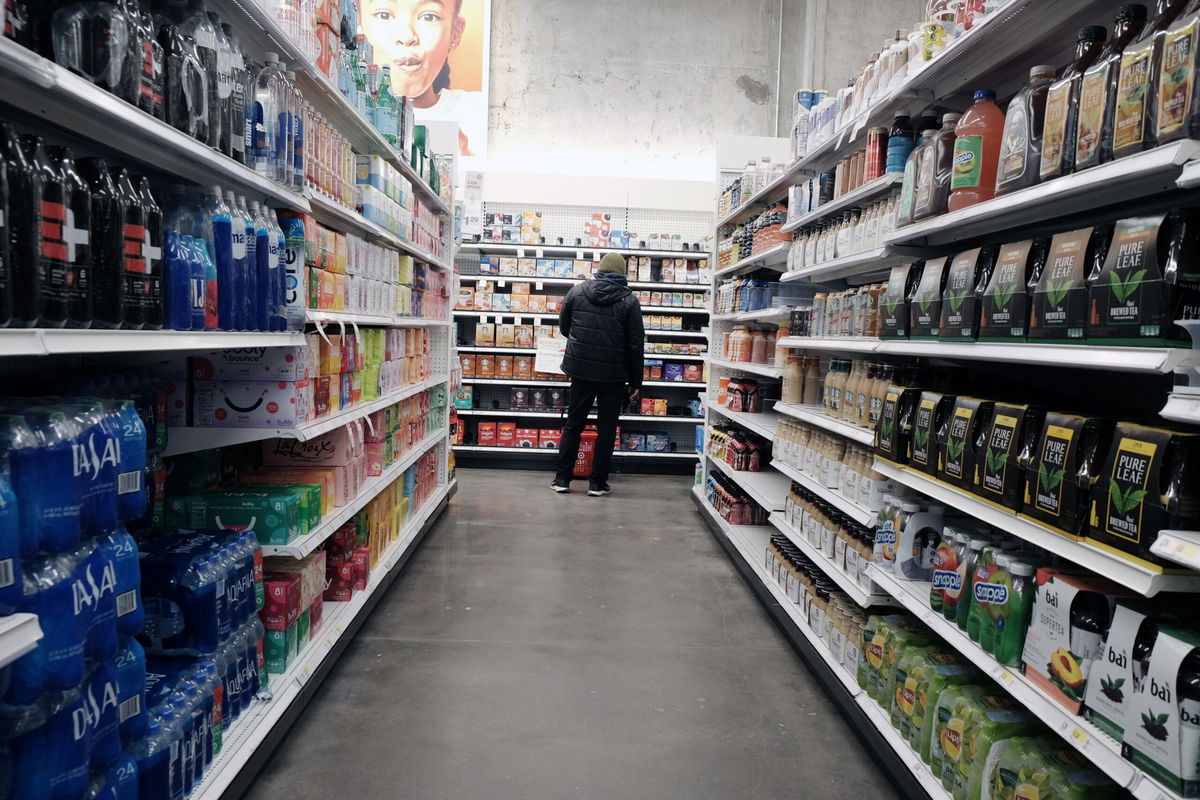No end to America’s rising prices: Another inflation measure rose in January

People shop for groceries in a Manhattan store on January 12 in New York City. America's high prices didn't budge in January. Another key inflation measure showed prices rising last month.
By Anneken Tappe, CNN Business
America’s rising prices were unrelenting in January. Another key inflation measure showed prices rising more than expected last month.
The producer price index, which tracks average price changes America’s producers get paid for their goods and services over time, rose 9.7% in the 12 months ended in January, not adjusted for seasonal swings, the Bureau of Labor Statistics reported Tuesday. That was far higher than economists had expected, albeit a 0.1 percentage point decrease from the revised series high set at the end of 2021.
“PPI offers a window to the price pressures that businesses are facing, and which will likely be passed on to consumers in the way of consumer price inflation in the months to come,” said PNC economist Kurt Rankin.
For the month of January alone, prices rose 1%, adjusted for seasonal swings, dwarfing both the price increase from December and economists’ expectations. Forecasts had only been for a 0.5% price increase.
Stripping out food, energy and trade services, which tend to have more volatile price swings, the inflation gauge rose 0.9% in January, the biggest jump since January 2021. Over the 12-month period, core prices rose 6.9%, a 0.1 percentage point decline compared with December.
Last week’s consumer price inflation data — another key measure of prices — also exceeded analysts’ expectations and climbed to nearly a 40-year high. Next week’s consumer spending price index report rounds out the major inflation data releases for January.
Economists are hopeful that America will see pandemic inflation reach its peak in the first months of 2022. It’s not clear yet whether this peak was reached in January or if it’s still to come.
But consumers are expecting some relief. Consumer expectations for price hikes in the year ahead fell for the first time since October 2020 last month, according to the consumer expectations survey from the Federal Reserve Bank of New York released Monday. Over a three-year horizon, inflation expectations also fell, marking the largest one-month decline since 2013 when the survey was started.
Where did prices rise?
The PPI tracks prices for finished goods and services sold to consumers, as well as the goods, services, maintenance and repair construction sold to businesses that make or provide those finished products.
In January, prices rose across the board, including for motor vehicles and equipment, gas, clothing and accessories, transportation and hospital outpatient care.
Last month’s increase in energy costs won’t get any better in February, said BMO senior economist Jennifer Lee in a note to clients.
On Monday, US oil prices briefly rose to their highest level since 2014 amid heightened concerns about a potential Russian invasion of Ukraine.
And even though oil prices fell early Tuesday, good inflation-related news is hard to come by.
“An early look at February in one part of the country isn’t bringing good news,” Lee said, referring to the New York state manufacturing index that was released at the same time as PPI and sharply underperformed expectations.
The high inflation has also been a challenge for Washington. President Joe Biden and administration officials have acknowledged how tough higher prices are for Americans.
“The President will continue to make progress on his three-part plan of addressing supply chain disruptions; lowering kitchen tables costs with his Build Back Better agenda; and promoting more competition,” a White House official told CNN Business Tuesday.
For the Federal Reserve, which is tasked with keeping prices stable, Tuesday’s report just reiterated that inflation is running too hot and that it’s time to adjust monetary policy.
The Fed started to wind down its pandemic stimulus programs late last year and signaled in January an intent to raise interest rates at its March meeting. Market expectations are slightly skewed towards a half percentage point rate hike, according to the CME FedWatch Tool.
The-CNN-Wire
™ & © 2022 Cable News Network, Inc., a WarnerMedia Company. All rights reserved.